Geographic Information System
Type of resources
Available actions
Topics
Keywords
Contact for the resource
Provided by
Years
Formats
Representation types
Update frequencies
Scale
-

[This metadata record has been superseded, see http://data.bgs.ac.uk/id/dataHolding/13480412]. The map shows the location of excess sample materials from the G-BASE (Geochemical Baseline Survey Of The Environment) geochemistry project:- stream sediments, panned heavy mineral concentrates and soils are stored long term in the National Geoscience Data Centre and are available for use in other projects. The Minerals Programme (incorporating the Mineral Reconnaissance Programme) sample collection contains reference samples of drill cores, rocks, tills, soils, stream sediments and panned concentrates. These samples were collected in the period 1974 - to date in mineralised and potentially mineralised areas of the United Kingdom, principally in the northern and western Britain.
-

This layer of the map based index (GeoIndex) is a map based index of the National Well Record Archive. This index shows the location of water wells along with basic information such as well name, depth and date of drilling. The index is based on the collection of over 105,000 paper records of water wells, springs and water boreholes. Geological information, construction details, water quality data and hydrogeological data may also be available for some water wells. The amount of detail held on individual sites varies widely and certain fields will have an 'unknown' value where the paper records have yet to be checked for their content. The zero values for the depth represent those for which the depth has yet to be entered into the database from the paper records.
-
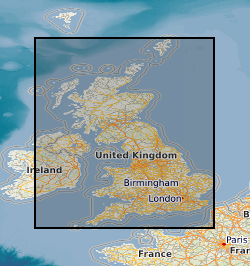
[This metadata record has been superseded, see http://data.bgs.ac.uk/id/dataHolding/13608329]. This layer of the map based index (GeoIndex) providex an index to 17,500 borehole rock samples (drillcore) from the Mineral Reconnaissance Programme (MRP) and related studies. The UK Government's Department of Trade and Industry (DTI) funded BGS to provide baseline information on areas prospective for the occurrence of metallic minerals in Great Britain. This programme, known as the MRP, ran continuously from 1973 to 1997 and covered particular locations across Great Britain. It was designed to stimulate private sector exploration and to encourage the development of Britain's indigenous mineral resources. Under the programme a number of boreholes were drilled to gather information.
-
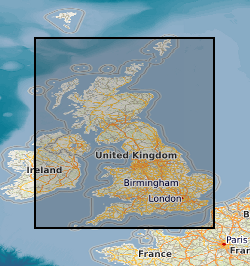
This layer of the GeoIndex shows the localities for which details of identified fossil specimens in the BGS Biostratigraphy Museum are databased. Only Ordovician and Silurian specimens listed currently. Samples and taxonomic identifications will be listed and will in future be able to be queried using the query-by-attribute tool to the right of the map. See also Fossil Localities. Material is available for inspection on application by e-mail; it is free for academic research but is charged for commercial work. Specimens are sometimes available for loan to bona fide academics.
-

This layer displays the urban areas for which there is an "urban geochemical mapping" report. An integral part of the G-BASE (Geochemical Baseline Survey of the Environment) mapping programme is to map and establish the soil geochemical baselines of urban areas. These data provide unique soil chemical information for the urban environment and are used to; assess the condition of soils within populated areas, identify and quantify human impact on soils in urban areas through comparison with the rural, natural soil geochemical background and Indicate elevated concentrations of potential harmful elements. 27 urban areas which have been sampled by the project to date.These include Glasgow, Nottingham, Ipswich and Cardiff.
-

The map shows the localities where samples that form part of the BGS rock collections have been taken. Many of these samples are from surface exposure, and were collected by BGS geologists during the course of geological mapping programmes. Others are from onshore boreholes or from mine and quarry workings. The principal collections are the E (England and Wales), S (Scotland), N (continuation of the S collection) and the MR (miscellaneous). The collections, which are held at the BGS offices at Keyworth (Nottingham) and Edinburgh, comprise both hand specimens and thin sections, although in individual samples either may not be immediately available. Users may also note that the BGS holds major collections of borehole cores and hand specimens as well as over a million palaeontological samples. The Britrocks database provides an index to these collections. With over 120,000 records, it now holds data for some 70% of the entire collections, including the UK samples shown in this application as well as rocks from overseas locations and reference minerals. The collections are continuously being added to and sample records from archived registers are also being copied into the electronic database. Map coverage is thin in some areas where copying from original paper registers has not been completed. Further information on Britrocks samples in these and other areas can be obtained from the Chief Curator at the BGS Keyworth (Nottingham) office or from the rock curator at the BGS Murchison House (Edinburgh) office.
-
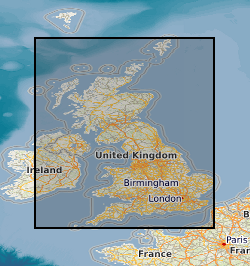
This layer of the map based index (GeoIndex) shows the locations of known mines, mineral showings and localities, including sites where minerals of economic interest have been identified in panned concentrates. The information for the index is taken from the Mineral Occurrence Database. The Mineral Occurrence Database holds information on mineral occurrences in the UK including locations of known mines, deposits, prospects and mineral showings, including sites where minerals of potential economic interest have been identified in panned concentrates. Data is normally taken from published sources or from internal BGS records, such as field sheets, rock and stream sediment collection cards. Data compilation started ca. 1994 and the database currently holds about 13 000 records, but details of many more old workings and occurrences remain to be added.
-
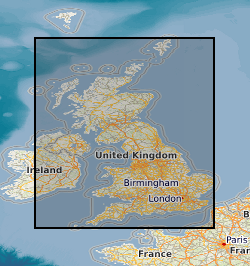
The high-resolution airborne surveys shown on the map based index (GeoIndex) are classed as those flown with low terrain clearance (typically below 200m) and flight line spacing of less than 300m. The surveys were flown with various combinations of magnetic, radiometric and EM techniques, and include; Surveys flown for the DTI mineral reconnaissance programme, Commercial surveys flown for mineral exploration and subsequently donated to the BGS and Surveys flown for the BGS for research and other purposes.
-
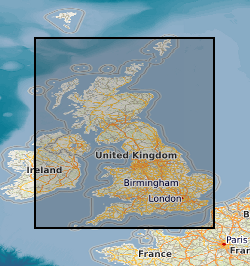
This layer of the map based index (GeoIndex) shows the availability of 1:50000 series paper geological maps. For England and Wales (and Northern Ireland), map sheets normally cover an area 30 km east-west and 20 km north-south; in Scotland the coverage is 20 km east-west and 30 km north-south. The 1:50 000 geological map grids are based on an early Ordnance Survey 1:63 360 (one inch to one mile) scale map grid and are not related to the current Ordnance Survey 1:50 000 map sheets. Maps are normally available in both flat and folded formats.
-
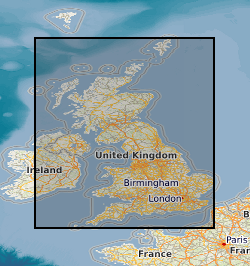
[This metadata record has been superseded, see http://data.bgs.ac.uk/id/dataHolding/13480158] The map shows the location and names of boreholes with digital geophysical logs acquired by the former National Coal Board and British Coal during their exploration for coal in the UK. Ownership of UK coal exploration data was transferred to the Coal Authority (Coal Authority) following privatisation of the UK coal industry. The Coal Authority have appointed the British Geological Survey as custodian of this important national geological data archive. These data are in general publicly available; however, access to data within active mining licences is restricted in that it requires the consent of the mining licensee. The Coal Authority data archive includes digital data for some of the geophysical borehole logging. These are mainly in the form of original field tapes; however, also available are some data transcribed onto more modern media during BGS projects. The BGS will be pleased to provide information on data availability for named boreholes or within specified geographic areas, together with cost estimates and options for supplying copies.
 NERC Data Catalogue Service
NERC Data Catalogue Service